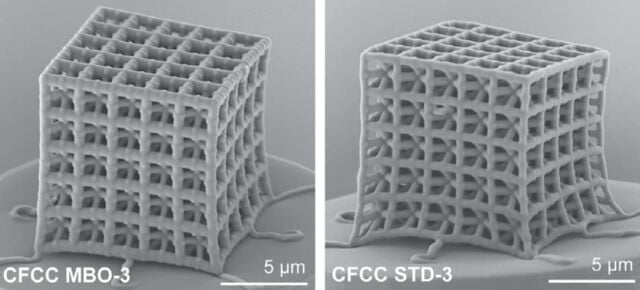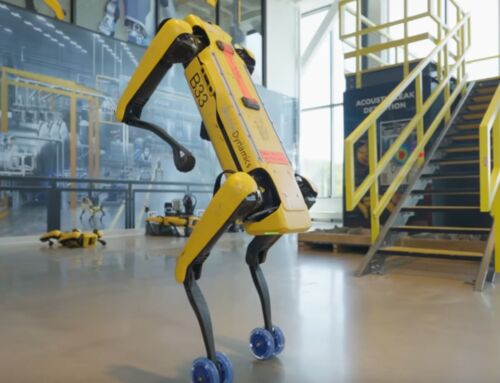 Close-ups of the nanomaterial. Credit University of Toronto
Close-ups of the nanomaterial. Credit University of Toronto
Strong as steel, light as foam: Machine learning and nano-3D printing create ultra-strong, lightweight materials.
Researchers at the University of Toronto’s Faculty of Applied Science & Engineering have used machine learning to develop nano-architected materials that combine the strength of carbon steel with the lightness of Styrofoam.
In a new study published in Advanced Materials, a team led by Professor Tobin Filleter (MIE) explains how they created nanomaterials with an unusual mix of high strength, low weight, and adaptability. This breakthrough could impact industries like automotive and aerospace.
These materials are built from tiny structural units just a few hundred nanometres wide—over 100 would fit across a human hair. Made of carbon and arranged in intricate 3D nanolattices, these structures unlock new possibilities for high-performance materials.
“Nano-architected materials combine high performance shapes, like making a bridge out of triangles, at nanoscale sizes, which takes advantage of the ‘smaller is stronger’ effect, to achieve some of the highest strength-to-weight and stiffness-to-weight ratios, of any material,” says Peter Serles (MIE MASc 1T9, MIE PhD 2T4), the first author of the new paper.
“However, the standard lattice shapes and geometries used tend to have sharp intersections and corners, which leads to the problem of stress concentrations. This results in early local failure and breakage of the materials, limiting their overall potential.
“As I thought about this challenge, I realized that it is a perfect problem for machine learning to tackle.”
source University of Toronto





Leave A Comment